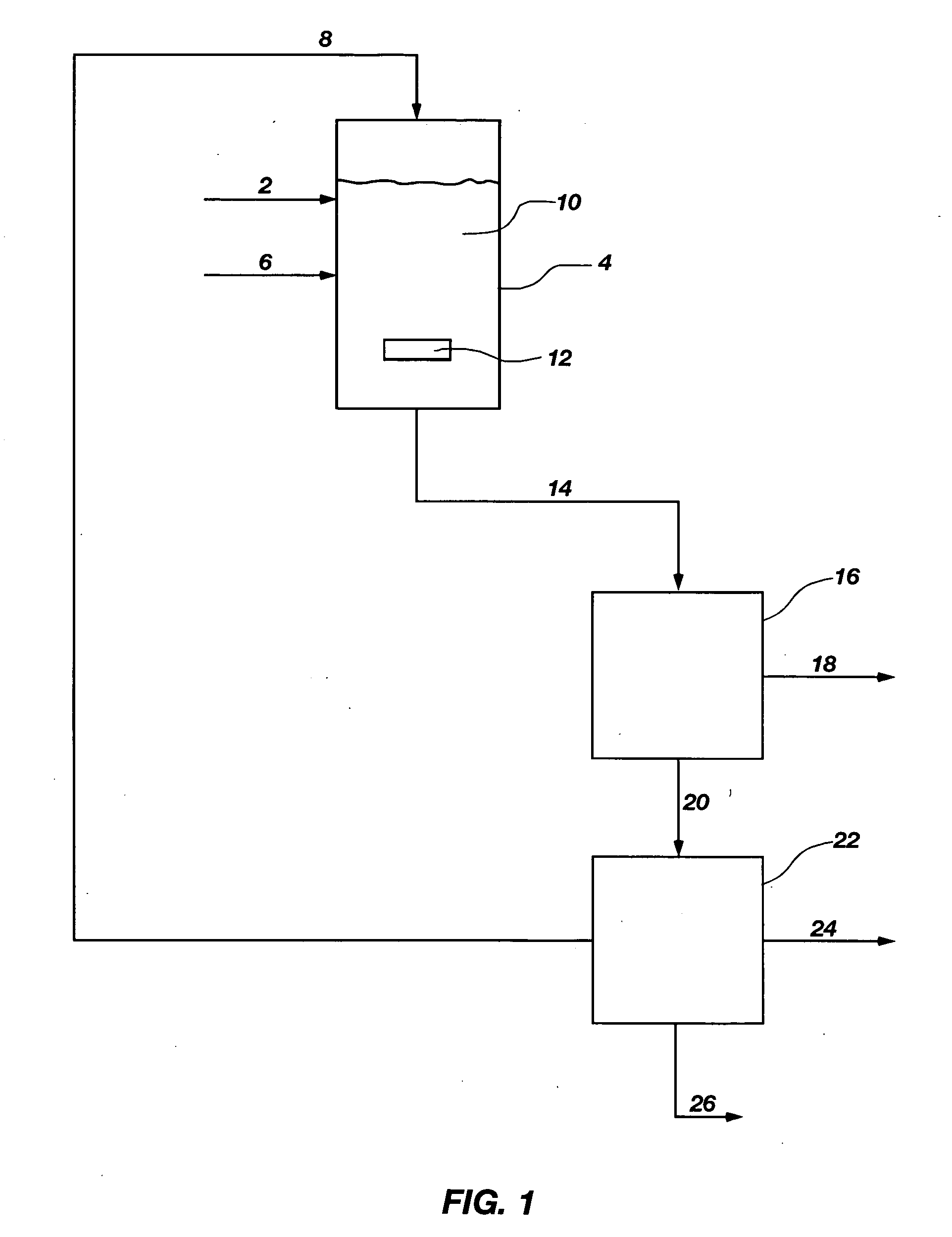Production of biodiesel using expanded gas solvents
a technology of expanded solvent and biodiesel, which is applied in the direction of fatty oil/acid recovery from waste, fatty oil/fat refining, fatty acid chemical modification, etc., can solve the problems of reducing the quality of biodiesel fuel, reducing the quality of glycerol, and limiting the reaction rate by the mixing ra
- Summary
- Abstract
- Description
- Claims
- Application Information
AI Technical Summary
Benefits of technology
Problems solved by technology
Method used
Image
Examples
example 1
[0029] Effects of Carbon Dioxide, Propane, or Ethane on Dissolution of Methanol in Soybean Oil
[0030] A series of experiments was performed at different temperatures and different initial methanol:soybean oil ratios to determine the effect of carbon dioxide, propane, or ethane as the expanding gas on the dissolution of methanol in soybean oil. With the increase in methanol solubility in the soybean oil using the carbon dioxide, propane, or ethane, it is anticipated that reaction rates would be significantly improved.
[0031] A so-called “view-cell” was set up with an associated temperature controller and high-pressure pumps. The volume of the view-cell was approximately 3 ml. About 1.5 ml of soybean oil (purchased from ICM Biomedicals, Inc.) and about 1.5 ml of methanol (purchased from Fisher Scientific International Inc.) were loaded in the view-cell, along with a magnetic stir bar. Cell ports and both inlet and outlet valves of the view-cell were closed before stirring was started ...
PUM
| Property | Measurement | Unit |
|---|---|---|
| temperature | aaaaa | aaaaa |
| temperature | aaaaa | aaaaa |
| pressure | aaaaa | aaaaa |
Abstract
Description
Claims
Application Information
 Login to View More
Login to View More - R&D
- Intellectual Property
- Life Sciences
- Materials
- Tech Scout
- Unparalleled Data Quality
- Higher Quality Content
- 60% Fewer Hallucinations
Browse by: Latest US Patents, China's latest patents, Technical Efficacy Thesaurus, Application Domain, Technology Topic, Popular Technical Reports.
© 2025 PatSnap. All rights reserved.Legal|Privacy policy|Modern Slavery Act Transparency Statement|Sitemap|About US| Contact US: help@patsnap.com

